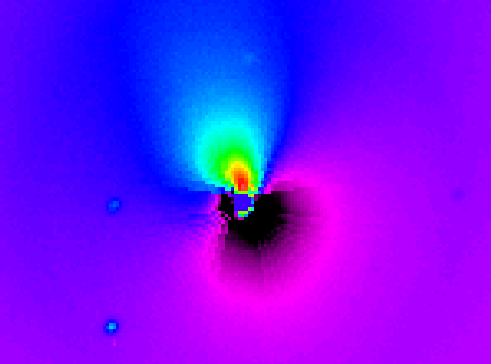
|
Credit & Copyright: European Southern Observatory
Explanation:
Approaching the inner Solar System,
comet Hale-Bopp's icy nucleus is
heated by sunlight, accelerating its production of dust and gas.
Shrouded in the resulting cloud, known as the coma, the cometary nucleus
remains hidden from direct view. However, astronomers using a 2.2 meter
telescope at the European Southern Observatory in May,
were able to detect an enormous jet of dust
extending northward (up) from the nuclear region as seen in
this false color image.
Dust jets may arise from vents on the surface of the nucleus.
Early estimates of the size
of Hale-Bopp's nucleus have indicated that it could be as large as
40 kilometers (24 miles) in diameter -- several times larger
than comet Halley's.
Hale-Bopp's copious dust production
bodes well for it becoming a
bright naked-eye comet in the spring of 1997.
|
January February March April May June July August September October November December |
| ||||||||||||||||||||||||||||||||||||||||||||||||
NASA Web Site Statements, Warnings, and Disclaimers
NASA Official: Jay Norris. Specific rights apply.
A service of: LHEA at NASA / GSFC
& Michigan Tech. U.
Based on Astronomy Picture
Of the Day
